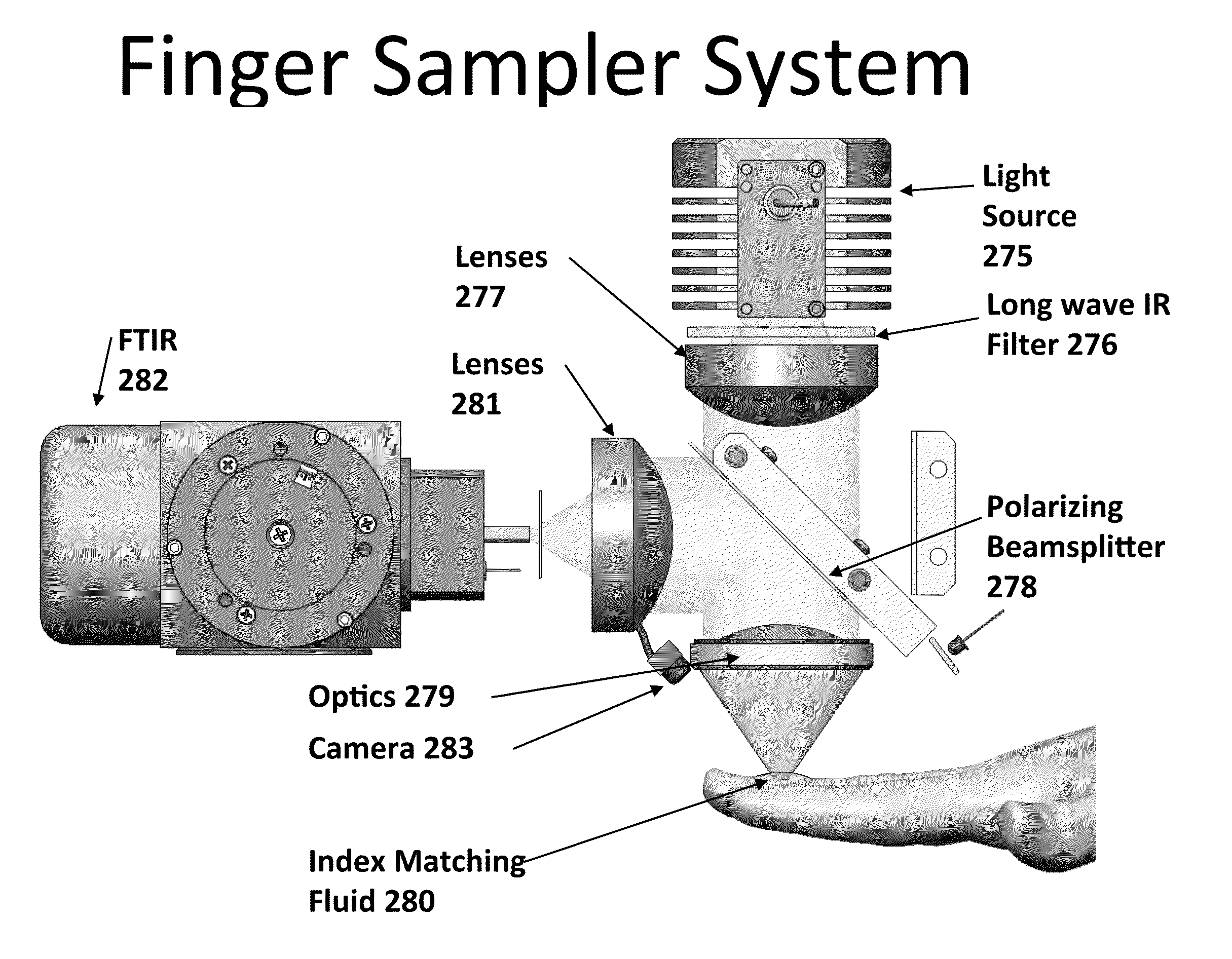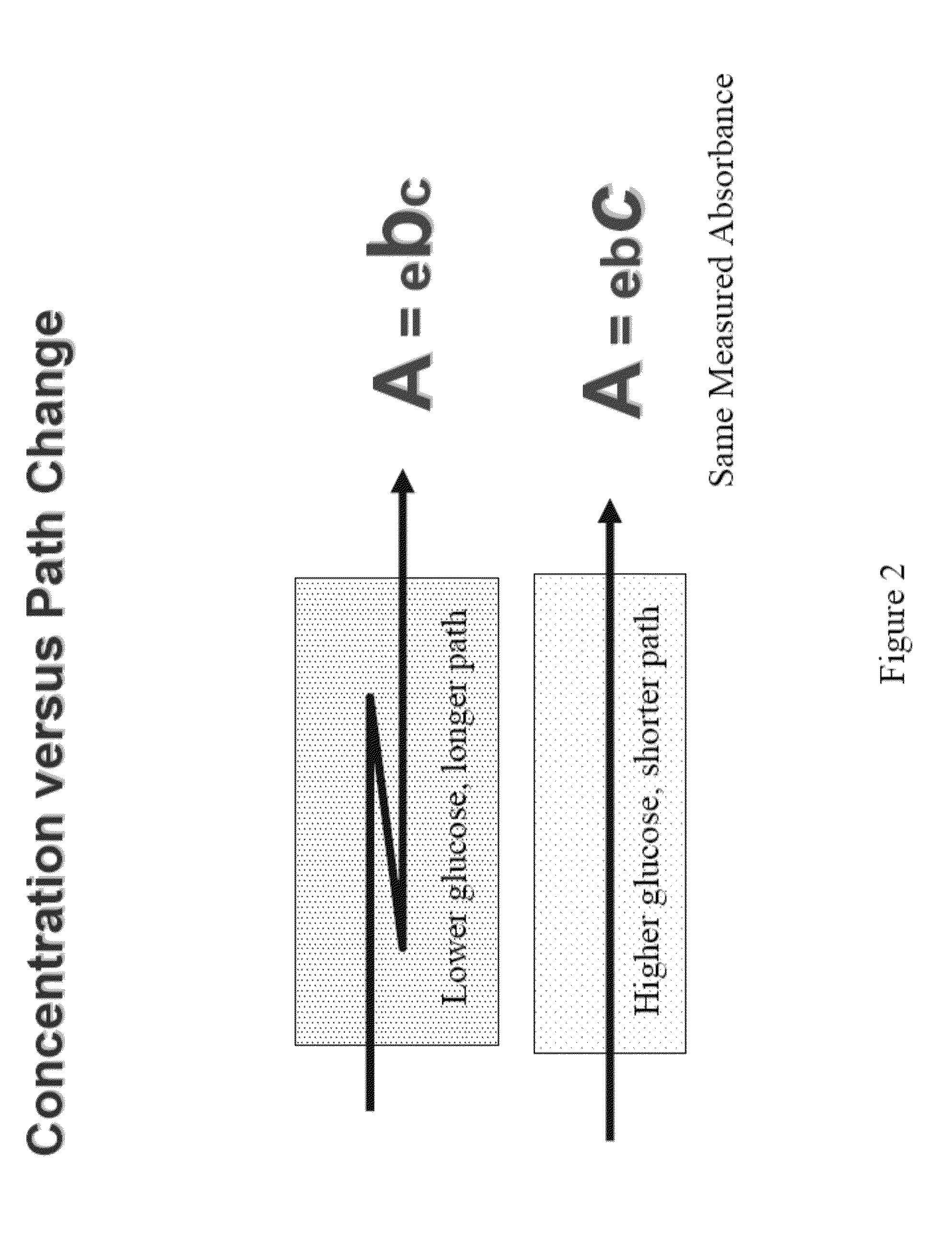Methods and Apparatuses for Noninvasive Determinations of Analytes
a non-invasive and analytical technology, applied in the field of system for measuring material properties, can solve the problems of insufficient system for generating non-invasive glucose measurements, insufficient precision of optical measurements, and limited use of larger, more powerful light sources, so as to achieve accurate non-invasive determination, improve signal-2-noise, and improve optical efficiency.
- Summary
- Abstract
- Description
- Claims
- Application Information
AI Technical Summary
Benefits of technology
Problems solved by technology
Method used
Image
Examples
embodiments and improvements
Additional Embodiments and Improvements
[0095]A sampling system such as described in the example embodiment above can be modified for specific performance objectives by one or more of the additional embodiments and improvements described below.
[0096]Auto Focus.
[0097]A motorized servo system along with a focus sensor, such as that used in autofocus cameras, can be used to maintain a precise distance between the tissue and the spectral measurement optical system during the measurement period. The tissue, the optical system, or both can be moved responsive to information from an autofocus sensor to cause a predetermined distance between the tissue and the optical system. Such an autofocus system can be especially applicable if the sampling site is the back of the hand or the area between the thumb and first finger. For example if a hand is placed on a flat surface, the auto focus mechanism could compensate for differences in hand thickness.
[0098]Tissue Scanning.
[0099]The tissue can be s...
example embodiment
[0139]FIG. 11 is a schematic depiction of an example embodiment. This sampler eliminates the re-imaging optics of the previous sampler, bringing the light to and from the tissue by directly contacting optical fibers with the tissue. This arrangement can reduce the requirement for precision optical alignment to that required in the permanent placement of the fibers during manufacture. Physical contact can also help reduce the collection of light scattered from the tissue surface. Direct tissue contact, however, can produce tissue property changes due to interface moisture changes and compression of the underlying structure.
[0140]Experimental Results
[0141]A series of tests were conducted with the various tissue sampling embodiments previously discussed with a goal of demonstrating and measuring their improved performance. These experiments involved both a tissue phantom model composed of scattering beads and tests on human tissue.
[0142]The tissue phantoms were sampled in a back scatte...
PUM
 Login to View More
Login to View More Abstract
Description
Claims
Application Information
 Login to View More
Login to View More - R&D
- Intellectual Property
- Life Sciences
- Materials
- Tech Scout
- Unparalleled Data Quality
- Higher Quality Content
- 60% Fewer Hallucinations
Browse by: Latest US Patents, China's latest patents, Technical Efficacy Thesaurus, Application Domain, Technology Topic, Popular Technical Reports.
© 2025 PatSnap. All rights reserved.Legal|Privacy policy|Modern Slavery Act Transparency Statement|Sitemap|About US| Contact US: help@patsnap.com



